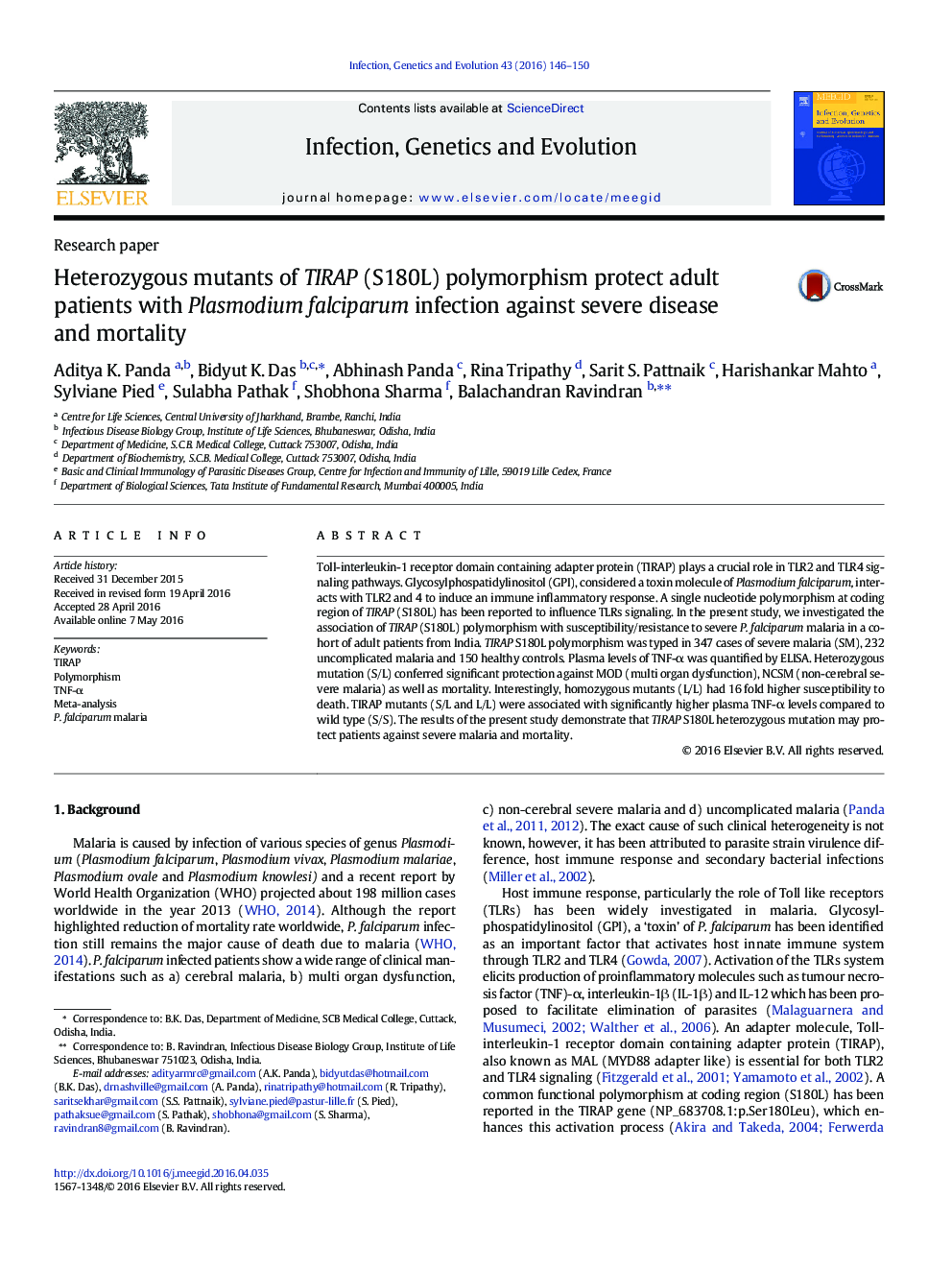| Article ID | Journal | Published Year | Pages | File Type |
|---|---|---|---|---|
| 2822951 | Infection, Genetics and Evolution | 2016 | 5 Pages |
•TIRAP plays a critical role in malaria since malarial 'toxin' GPI signals through TLR2•Heterozygous mutants for TIRAP (S/L) polymorphism are protected from development of severe malaria as well as mortality•Patients with homozygous mutation (S/L) were 16 fold more susceptible to mortality by malaria•TIRAP (S180L) Homozygous mutant (L/L) are susceptible to malarial death.
Toll-interleukin-1 receptor domain containing adapter protein (TIRAP) plays a crucial role in TLR2 and TLR4 signaling pathways. Glycosylphospatidylinositol (GPI), considered a toxin molecule of Plasmodium falciparum, interacts with TLR2 and 4 to induce an immune inflammatory response. A single nucleotide polymorphism at coding region of TIRAP (S180L) has been reported to influence TLRs signaling. In the present study, we investigated the association of TIRAP (S180L) polymorphism with susceptibility/resistance to severe P. falciparum malaria in a cohort of adult patients from India. TIRAP S180L polymorphism was typed in 347 cases of severe malaria (SM), 232 uncomplicated malaria and 150 healthy controls. Plasma levels of TNF-α was quantified by ELISA. Heterozygous mutation (S/L) conferred significant protection against MOD (multi organ dysfunction), NCSM (non-cerebral severe malaria) as well as mortality. Interestingly, homozygous mutants (L/L) had 16 fold higher susceptibility to death. TIRAP mutants (S/L and L/L) were associated with significantly higher plasma TNF-α levels compared to wild type (S/S). The results of the present study demonstrate that TIRAP S180L heterozygous mutation may protect patients against severe malaria and mortality.
